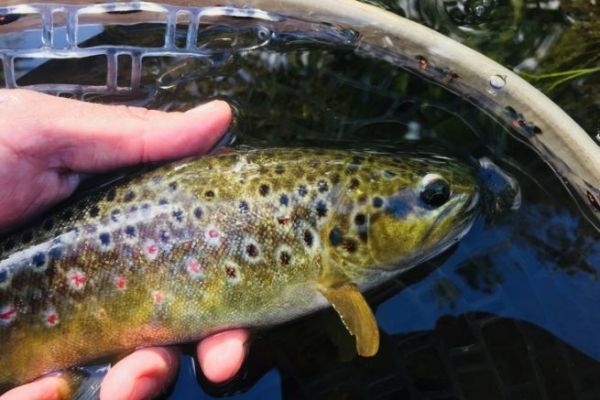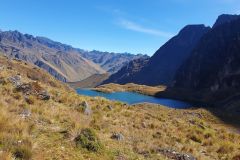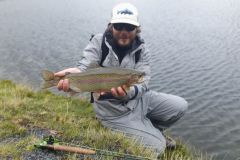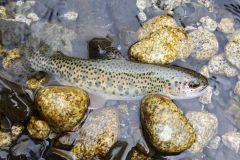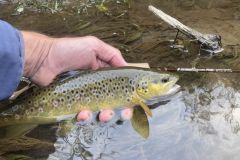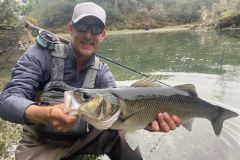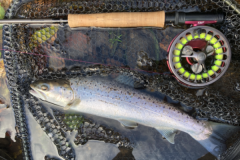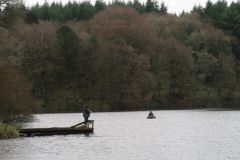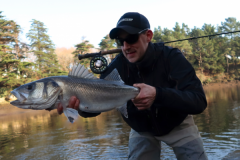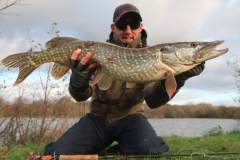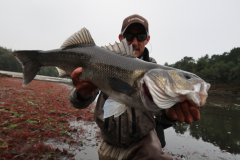Streamer fishing for great bites
Streamer fishing is less common than it used to be, but a handful of die-hards continue to use streamers to try and bring out the beautiful trout at the start of the season in cold, high water.
There are two main ways to fish with streamers:
Traditional fishing with a 9 or 10-foot 4 to 6 line, a floating line with a plunging or floating tip and adding tips or polyleaders to adapt the tip density to the position. We cover the positions by fishing downstream, trying to get the streamer close to the bottom and in the right spots.
Streamer fishing with line" as for nymph fishing with line, but using a streamer mounted on a jig hook (to avoid snags) to fish well-marked spots and bring out a nice trout from its hiding place.
Streamers imitating local prey - minnows, loaches, sculpins and even small white fish - are most often used.
One of Florian Stephan's timeless streamers, known as the "peacock jack", is very effective and can be mounted on a straight, conventional hook, but also on an iig hook to limit snagging.
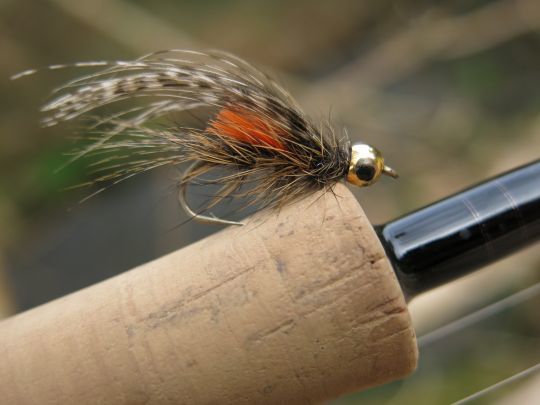
Drown fishing when trout are active in the water layer at the slightest hatch
As with streamers, drowned-water fishing is disappearing in favor of the more modern NAF or line nymph fishing, which has been on the rise for several years now.
For me, these are two very different but complementary techniques.
It's true that wire nymphing allows you to catch fish in almost all conditions, but in the end, drowning is quite versatile.
The main difference is that nymphs are fished closer to the bottom and for longer, and the flies pass more smoothly. This is particularly effective at the start of the season, when trout are not very active and don't move around much.
A good drowned-water angler can, however, make some fine catches as soon as the water warms up and the hatch brings the trout out of their hiding places!
It's not for nothing that fishermen in certain regions, such as Brittany, fished in drowned waters to make beautiful baskets and sometimes live off the fruits of their catch.
Natural colors: brown or russet, black, gray, with or without colored tags are my preference and are and always will be striking.
They can be mounted with a bead on the head, especially for tippet flies, to fish deeper and stretch the fly train. Properly handled, sink-fly fishing still has a long way to go.
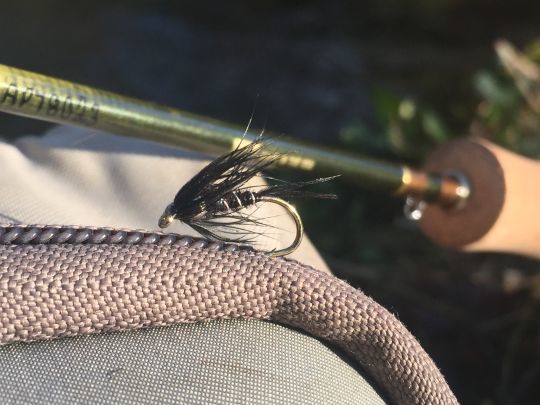
Nymph fishing with a line to get close to the bottom and on the right spots
NAF or line nymphing is now practised by a large majority of anglers who have adapted to the conditions, and in particular to the reduction in aquatic insects and therefore hatchlings.
Since trout feed 80% below the surface, they are very receptive to nymph fishing and come to the surface less and less.
So you have to adapt to these changes to keep catching trout and beautiful fish on a regular basis. It's not possible to sight-fish nymphs in every river in France, and line-fishing nymphs also allow you to fish strong, deep currents where trout are hard to reach.
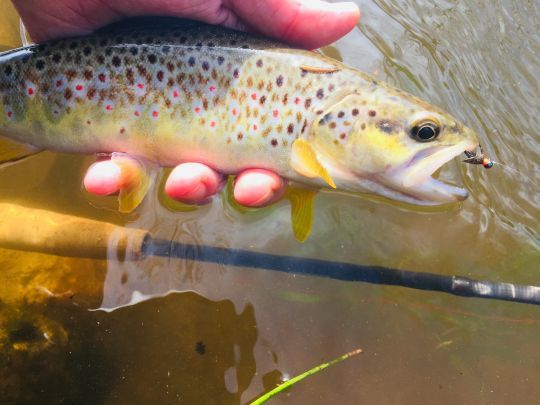
This is an interesting technique, which is certainly a far cry from whip fishing, as the casting action is reduced to its simplest expression: propelling a weight (weighted flies) with a flexible rod. But the results depend mainly on the quality of the drift, which is intimately linked to a good reading of the water, mastery of the nymph cast and, above all, the right choice of nymph weight (rather than model) to obtain natural drifts that are therefore "fishy" and effective.
At the start of the season, hairy nymphs of good size (10, 12 or even 14) in pheasant or hare's ear (ORL) with an orange tag are for me the best. Combined with a gold, copper or silver tungsten ball, they will be well detected by the fish and trigger regular bites.
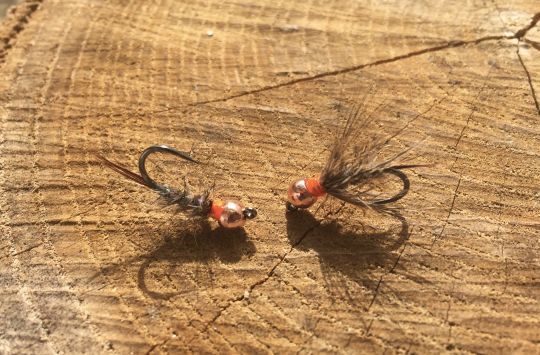
Dry fishing for pleasure!
Fly-fishermen always take pleasure in reeling in their trout. Whatever the size, seeing a fish come to the surface to gobble up a fly always provides the same sensations. At the start of the season, it's not the king of fishing, though!
Depending on the region, dry fly fishing regularly catches trout and sometimes even big fish. March Browns are certainly the flies most eagerly awaited by beautiful trout, as their size makes them a non-negligible source of protein.
But small baetis (Rhodanis, niger) and green-ass sedges (brachycentrus) can also hatch sufficiently to trigger surface activity, especially at the hottest times of the day.
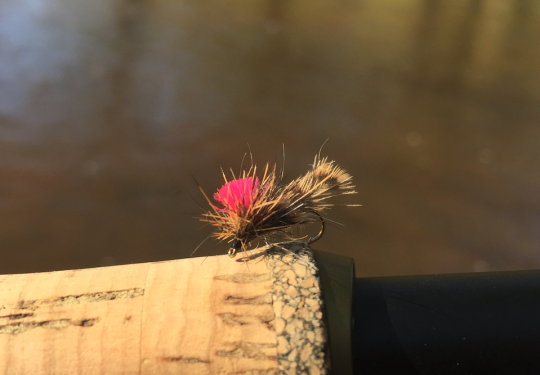
Personally, on my rivers in Brittany, it's often the trichoptera hatchlings that allow us to catch the first dry trout of the year.
I really like the woodcock butt imitations, which are very imitative and effective. In sizes 12 and 14, trout rarely refuse them, and it's a good idea to have them in your tins for the start of the season, but also throughout the year in sizes 16, 18 and 20.

 /
/ 